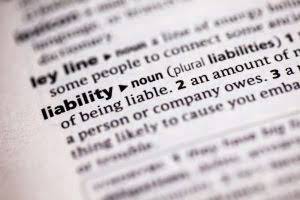
We asked all learners to give feedback on our instructors based on the quality of their teaching style. Except for certain marketable investment securities, typically an asset’s recorded cost will not be changed due to inflation or market fluctuations. I did not find any culturally insensitive or offensive content in this textbook. There are many format options that are common to OpenStax textbooks that make this book a very accessible and usable book.
Accounting Basics Accounting 101
One of the major components of a balance sheet is short-term assets, which are assets that can be converted into cash within a year. Accounts receivables and inventories constitute a major part of short-term assets. Understanding accounting for these accounts will help you uncover how these accounts change over time, their valuation, and their usefulness in managerial decision-making.

Who Uses Financial Accounting?
For example, Lynn Sanders owns a small printing company, Printing Plus. The customer did not pay cash for the service at that time and was billed for the service, paying at a later date. When should Lynn recognize the revenue, on August 10 or at the later payment date? She provided the service to the customer, and there is a reasonable expectation that the customer will pay at the later date. There also does not have to be a correlation between when cash is collected and when revenue is recognized.
Principles of Accounting Volume 1 Financial Accounting
- This book covers all the same topics that I would cover in an Accounting I course.
- IFRS is seen as a more dynamic platform that is regularly being revised in response to an ever-changing financial environment, while GAAP is more static.
- Financial statements generated through financial accounting are used by many parties outside of a company, including lenders, government agencies, auditors, insurance agencies, and investors.
- The materiality concept states that transactions and events must be reported if they are material, meaning they have a significant effect on the financial statements of a business.
- The Securities and Exchange Commission (SEC), the U.S. government agency responsible for protecting investors and maintaining order in the securities markets, has expressed interest in transitioning to IFRS.
- This electronic database contains the official accounting standards (the equivalent of many thousands of printed pages) which apply to the financial reporting of U.S companies and not-for-profit organizations.
A balance sheet is used by management, lenders, and investors to assess the liquidity and solvency of a company. Through financial ratio analysis, financial accounting allows these parties to compare one balance sheet https://www.bookstime.com/ account with another. For example, the current ratio compares the amount of current assets with current liabilities to determine how likely a company is going to be able to meet short-term debt obligations.
How to Prepare Financial Statements
This team of experts helps Finance Strategists maintain the highest level of accuracy and professionalism possible. Our team of reviewers are established professionals with decades of experience in areas of personal finance and hold many advanced degrees and certifications. At Finance Strategists, we partner with financial experts to ensure the accuracy of our financial content.
- Though there are many similarities between the conceptual framework under US GAAP and IFRS, these similar foundations result in different standards and/or different interpretations.
- Expenses are recorded upon receiving an invoice, not when paying it.
- The entire purpose of financial accounting is to prepare financial statements, which are used by a variety of groups and often required as part of agreements with the preparing company.
- We begin with brief descriptions of many of the underlying principles, assumptions, concepts, constraints, qualitative characteristics, etc.
- Credits are accounting entries that increase liabilities or decrease assets.
A liability is considered current of they are payable within 12 months from the end of the accounting period, or within the company’s normal operating cycle if the cycle exceeds 12 months. Separate entity concept state that all business transactions should be recorded in an independent fundamental accounting concepts manner, without concern for the owner’s personal transactions. Accountants sometimes make future projections with respect to revenues, expenses, and debts. The concept of “present value” (PV) describes calculated adjustments that express those future funds in present-day dollars.
- This book is perhaps the most comprehensive text I have seen for financial accounting.
- You will often see the terms debit and credit represented in shorthand, written as DR or dr and CR or cr, respectively.
- When the FASB creates accounting standards and any subsequent clarifications or guidance, it only has to consider the effects of those standards, clarifications, or guidance on US-based companies.
- Their purpose is to provide consistent information to investors, creditors, regulators, and tax authorities.
- The text does have material in Chapter 7 (e.g. 7.1 storing data) that may need to be addressed as technology changes and/or might make it obsolete, but I don’t see a way around this.

You will develop an understanding of the particular type of information provided by each financial statement and how financial statements are related to each other. The accounting guideline that permits the violation of another accounting guideline if the amount is insignificant. For example, a profitable company with several million dollars of sales is likely to expense immediately a $200 printer instead of depreciating the printer over its useful life. The justification is that no lender or investor will be misled by a one-time expense of $200 instead of say $40 per year for five years. Another example is a large company’s reporting of financial statement amounts in thousands of dollars instead of amounts to the penny. For U.S. companies, the monetary unit assumption allows accountants to express a company’s wide-ranging assets as dollar amounts.
What Are Generally Accepted Accounting Principles (GAAP)?
Chapter 1 presents a broad overview of accounting which is common in financial accounting texts. As I mentioned previously, chapter 2 makes the assumption that students already grasp at this early stage what revenues and expenses are and the differences between cash and accrual accounting. The procedural part of accounting—recording transactions right through to creating financial statements—is a universal process. Businesses all around the world carry out this process as part of their normal operations. In carrying out these steps, the timing and rate at which transactions are recorded and subsequently reported in the financial statements are determined by the accepted accounting principles used by the company. Revenues and expenses are accounted for and reported on the income statement, resulting in the determination of net income at the bottom of the statement.
Each chapter opens with a relatable real-life scenario for today’s college student to build a strong foundation that is applicable across many aspects of business. The topics are organized along the same lines as best-selling financial accounting textbooks. Principles of Accounting Volume 1 could be presented much more concisely, more simply; and with better clarity. These suggestions would improve clarity from the student learning perspective and process.
